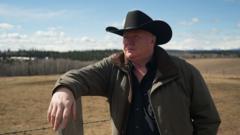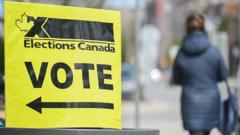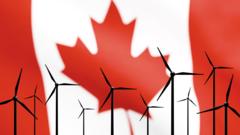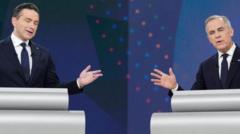With just days left until the Canadian election, polls indicate a narrowing gap between Prime Minister Mark Carney's Liberal Party and Pierre Poilievre's Conservative Party, though analysts believe the Liberals still hold an edge.
Polls Tighten as Canada’s Election Approaches

Polls Tighten as Canada’s Election Approaches
As Election Day nears, the race in Canada tightens between the Liberal and Conservative parties.
The latest data from CBC's poll tracker shows the Liberal Party with a slight lead of 42% compared to the Conservative Party's 39%, a decrease from an earlier margin of nearly seven points at the campaign's outset. Despite this tightening, experts suggest that the Liberals are still in a favorable position to secure victory.
Sébastien Dallaire, executive vice president for Eastern Canada at Leger, points out that the electoral landscape in Canada can be misleading, similar to the U.S. Electoral College system. He suggests that even if the national vote were to even out, the Liberals could potentially secure more seats, enabling them to form a government and extend Carney's tenure as prime minister.
While the Conservatives may have underreported national support, their challenges persist. They have previously won the popular vote yet have been unable to secure enough parliamentary seats. Their voter base is often concentrated in specific districts, which could undermine broader electoral gains.
In summary, as Canada gears up for an electoral showdown, the Liberal Party, despite dwindling leads, seems positioned to retain power in light of historical voting patterns and electoral seat distribution dynamics.
Sébastien Dallaire, executive vice president for Eastern Canada at Leger, points out that the electoral landscape in Canada can be misleading, similar to the U.S. Electoral College system. He suggests that even if the national vote were to even out, the Liberals could potentially secure more seats, enabling them to form a government and extend Carney's tenure as prime minister.
While the Conservatives may have underreported national support, their challenges persist. They have previously won the popular vote yet have been unable to secure enough parliamentary seats. Their voter base is often concentrated in specific districts, which could undermine broader electoral gains.
In summary, as Canada gears up for an electoral showdown, the Liberal Party, despite dwindling leads, seems positioned to retain power in light of historical voting patterns and electoral seat distribution dynamics.



















